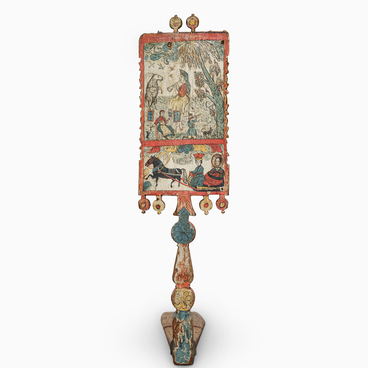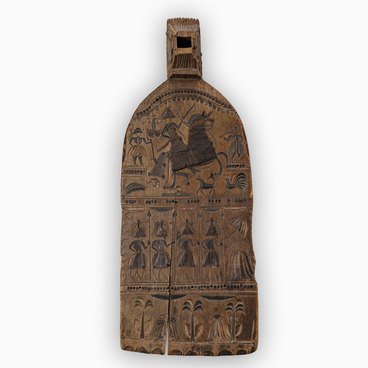Birch bark was popular among craftsmen because it retained its properties during processing, mainly, its softness, flexibility and strength. Shoes, clothes, dishes and jewelry were made from it. Peasants used many birch bark items in their everyday life.
A tuyes is a cylindrical vessel made of birch bark with a ground-in lid, which was used in everyday life to store various food items and liquids.
Birch bark containers have been used for centuries. In Russia, a tuyes is also known as a burak or a postavok.
Design-wise, a birch bark tuyes resembles a thermos. It has an outer and inner wall, with a small gap between them, which serves as an insulating layer. The inner wall is smooth, as it holds the liquid. The outer wall serves a different purpose — it is supposed to be aesthetically pleasing. No wonder it was called a shirt and decorated with bright and vivid images.
Tuyes boxes are known for their bactericidal properties: milk in a birch bark container remained fresh much longer, the salt never got wet, and salted mushrooms and cucumbers also acquired a pleasant aroma and could be stored for a long time.
Peasants used birch bark boxes not only for food storage, but also as foraging baskets: children went with them to the forest to pick mushrooms and berries.
Depending on the purpose, tuyes containers were made of a certain size and shape: large, medium, small, with rounded or oval bottoms. If a box was to carry food, then a grip handle was added to the lid. The lid fitted so tightly that the container could be carried by this handle.
Birch bark boxes are distinguished by original images painted on them, even though the motifs are rather simple. The inner layers of birch bark have a wide variety of colors — from golden yellow to pinkish brown. Northern craftsmen were famous for their special skill in decorating birch bark items. Their pattern is vibrant and picturesque, and there are many fine details in the drawing.
The tuyes box presented in the Museum of Russian
Heritage is painted in bright colors: images of flowers are freely arranged on
a light background, and a rooster is placed among them. The upper and lower
belts of the tuyes are formed by a jagged pattern. The image of a bird
symbolizes sunrise, and a cockerel was considered in Russia a defender of
children. As a rule, the cockerel was depicted on the dishes from which the
young people drank and ate at the wedding.



